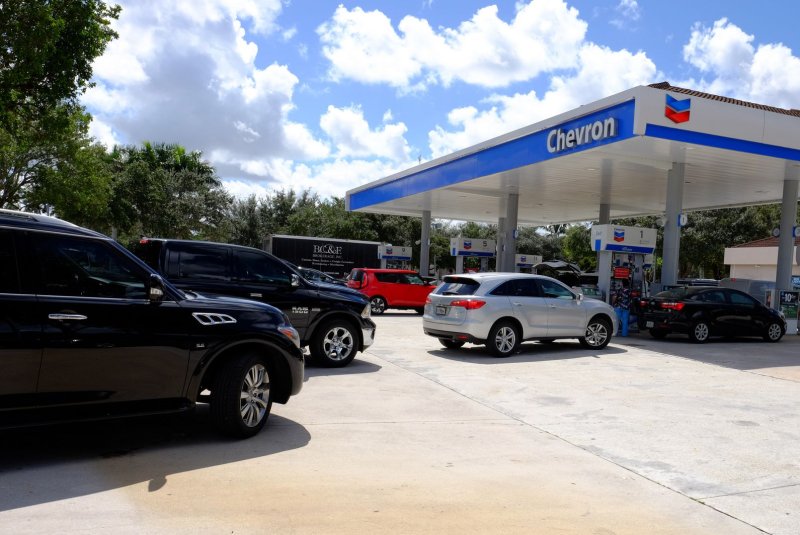Steady demand pressures during the official summer travel season translate to higher prices at the pump. File Photo by Gary I Rothstein/UPI |
License Photo
Aug. 8 (UPI) -- Swelling consumer demand and pressure from crude oil prices means the average price for gas is 23 cents higher than this time last year, retail analysis finds.
Motor club AAA reports a national average retail price for a gallon of regular unleaded gasoline at $2.35 for Tuesday, a slight increase from the previous day, about 9 cents higher than a month ago and 23 cents more than this date in 2016.
Demand pressures increase during the official U.S. summer travel season, which runs from April to September. The federal government reported gasoline demand set a record last week and the motor club said it expected those pressures to continue.
"The 2017 demand average over the past four weeks is about one percent ahead of the same four-week period last year," its weekly market report read. "With summer demand running full steam ahead, drivers can expect prices to continue rising."
By region, the West Coast remains the most expensive market in the country, with California holding the distinction as the state in the Lower 48 with the highest price at $2.96 per gallon. Regional gasoline levels remain below what AAA said was a "comfort zone" and regional demand pressures should make matters worse given the rush of tourism from that late August solar eclipse in the United States.
The Great Lakes market, meanwhile, remains the most volatile, with most states reversing course slightly after sharp spikes at the start of the month. The region remains expensive, however, with Michigan posting a state average that's 5 cents above the national average. That comes despite gasoline levels that are above the five-year average for the region.
Crude oil prices remain stuck in a range between the upper $40s and low $50s per barrel, a slight increase from a trading band in the low to mid $40s. Higher oil prices mean higher gasoline prices, though analysts said the rally for oil shouldn't push the price up too much higher given the recent slowdown in exploration and production work in the United States.
A separate report from the University of Michigan finds new-car drivers are going longer for less, with the average fuel economy for new vehicles sold in July getting about a half-mile per gallon more than those sold in June.
"This increase likely reflects the decreased proportion of light trucks in the sales mix in July compared to June," the emailed report read.















